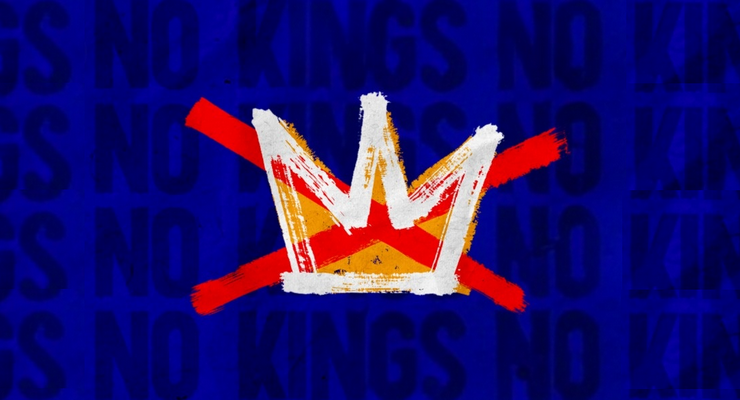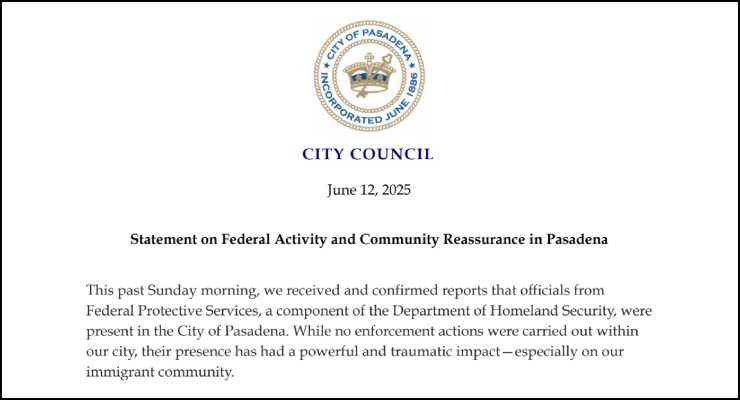
As the end of 2022 quickly approaches, Caltech News looks back at our coverage of the research, discoveries, events, and experiences that shaped the Institute. Here are some highlights.
Revealing the Secrets of the Red Planet
 Caltech researchers used data gathered both in space by the Mars Reconnaissance Orbiter (MRO) and on the ground by the Mars Perseverance Rover to continue to probe the Red Planet’s past and any potential signs it was previously hospitable to life. In January, MRO survey data revealed that liquid water was on Mars about one billion years earlier than suspected. Meanwhile, Perseverance made a beeline across the floor of Jezero Crater during spring 2022, arriving at an ancient river delta in April. The delta is thought to be one of the best possible places to search for past signs of life; there, Perseverance found signs of past water along with evidence of possible organic compounds in the igneous rocks on the crater floor. After a few months at the delta, Perseverance project scientist Ken Farley announced in September the discovery of a class of organic molecules in two samples of mudstone rock collected from a feature called Wildcat Ridge. While these organic molecules can be produced through nonliving chemical processes, some of the molecules themselves are among the building blocks of life.
Caltech researchers used data gathered both in space by the Mars Reconnaissance Orbiter (MRO) and on the ground by the Mars Perseverance Rover to continue to probe the Red Planet’s past and any potential signs it was previously hospitable to life. In January, MRO survey data revealed that liquid water was on Mars about one billion years earlier than suspected. Meanwhile, Perseverance made a beeline across the floor of Jezero Crater during spring 2022, arriving at an ancient river delta in April. The delta is thought to be one of the best possible places to search for past signs of life; there, Perseverance found signs of past water along with evidence of possible organic compounds in the igneous rocks on the crater floor. After a few months at the delta, Perseverance project scientist Ken Farley announced in September the discovery of a class of organic molecules in two samples of mudstone rock collected from a feature called Wildcat Ridge. While these organic molecules can be produced through nonliving chemical processes, some of the molecules themselves are among the building blocks of life.
Surveying the Cosmos and Our Interaction with It
 Not all eyes aimed toward space are set on Mars, however. New instruments and surveys provided insights related to other celestial bodies in our Milky Way galaxy, such as asteroids, and helped discover an abundance of planets outside of our solar system.
Not all eyes aimed toward space are set on Mars, however. New instruments and surveys provided insights related to other celestial bodies in our Milky Way galaxy, such as asteroids, and helped discover an abundance of planets outside of our solar system.
In March, the NASA Exoplanet Archive, an official catalog for exoplanets—planets that circle other stars beyond our sun—housed at Caltech’s IPAC astronomy center, officially hit a new milestone: 5,000 exoplanets.
Looking even farther out into the universe from planet Earth, Caltech researchers made several discoveries, including a tight-knit pair of supermassive black holes locked in an epic waltz, and a new “black widow” star system, spotted by the Zwicky Transient Facility (ZTF), in which a rapidly spinning dead star called a pulsar is slowly evaporating its companion.
Caltech’s ZTF sky survey instrument, based at Palomar Observatory, had previously discovered the first known asteroid to circle entirely within the orbit of Venus. To honor the Pauma band of Indigenous peoples whose ancestral lands include Palomar Mountain, the ZTF team asked the band to name the asteroid. They chose ‘Ayló’chaxnim, which means “Venus girl” in their native language of Luiseño.
And far closer to home, new faculty member and historian Lisa Ruth Rand set her sights on the debris we have left in Earth’s orbit (and beyond), and what it can tell us about humanity and our evolving relationship with space.
Building Better Ways to See the Universe
 Caltech astronomers continue to lead the way in the development of ever more powerful instruments for answering fundamental questions about our place in the universe. The new Keck Planet Finder, led by astronomer Andrew Howard, will take advantage of the W. M. Keck Observatory’s giant telescopes to search for and characterize hundreds, and ultimately, thousands of exoplanets, including Earth-size planets that may harbor conditions suitable for life.
Caltech astronomers continue to lead the way in the development of ever more powerful instruments for answering fundamental questions about our place in the universe. The new Keck Planet Finder, led by astronomer Andrew Howard, will take advantage of the W. M. Keck Observatory’s giant telescopes to search for and characterize hundreds, and ultimately, thousands of exoplanets, including Earth-size planets that may harbor conditions suitable for life.
NASA has also selected the UltraViolet EXplorer (UVEX) proposal, led by astronomer Fiona Harrison, for further study. If selected to become a mission, UVEX would conduct a deep survey of the whole sky in ultraviolet light to provide new insights into galaxy evolution and the life cycle of stars. Harrison’s current NASA mission, NuSTAR (Nuclear Spectroscopic Telescope Array), an X-ray telescope that hunts black holes, celebrated 10 years in space. Meanwhile, the development of NASA’s SPHEREx (Spectro-Photometer for the History of the Universe, Epoch of Reionization and Ices Explorer), led by astronomer Jamie Bock, is forging ahead with a customized test chamber delivered this year to Caltech.
As new telescopes continue to come together, a venerable Caltech telescope is being taken apart atop Maunakea in Hawai‘i. The Caltech Submillimeter Observatory (CSO) received the final permits to begin its decommissioning process. Scientists plan to ultimately repurpose the telescope and put it back together in Chile.
Improving Human Health
 Caltech’s fundamental quest for understanding life and our origins also inspires many research efforts and innovations with the potential to improve human health and well-being.
Caltech’s fundamental quest for understanding life and our origins also inspires many research efforts and innovations with the potential to improve human health and well-being.
Continuing work that began with the COVID-19 pandemic, Pamela Björkman and colleagues developed a new type of vaccine that protects against the virus that causes COVID-19 and closely related viruses, while Sarkis Mazmanian has shown how an imbalance of gut microbes can cause binge eating. Meanwhile, other researchers made real what would have seemed like science fiction only a few years ago: Caltech medical engineer Wei Gao created an artificial skin for robots that interfaces with human skin and allows a human operator to “feel” what the robot is sensing; chemical engineer Mikhail Shapiro engineered a strain of remote-controlled bacteria that seek out tumors inside the human body to deliver targeted drugs on command; and neuroscientist Richard Andersen and colleagues developed a brain–machine interface that can read a person’s brain activity and translate it into the words the person was thinking— technology that may one day allow people with full-body paralysis to speak. Additionally, Caltech researchers created a “synthetic” mouse embryo, complete with brain and beating heart; completed a 20-year quest to decode one of the most complex and important pieces of machinery in our cells; and discovered how fruit flies’ extremely sensitive noses help them find food.
Advancing Sustainability Solutions
 In 2022, Caltech paid tribute to its long history of advances in sustainability and then looked forward to pioneering new initiatives and technologies that will reduce humanity’s footprint on Earth’s fragile environment. Through the newly launched Caltech Heritage Project, a series of oral histories published this year captured the pivotal role Caltech alumni played in the electric car revolution. Meanwhile, in April, Caltech hosted the Caltech Energy 10 (CE10) conference, bringing thought leaders to campus to chart a path toward achieving the Biden administration’s stated goal to cut U.S. global warming gas emissions by 50 percent within the next 10 years.
In 2022, Caltech paid tribute to its long history of advances in sustainability and then looked forward to pioneering new initiatives and technologies that will reduce humanity’s footprint on Earth’s fragile environment. Through the newly launched Caltech Heritage Project, a series of oral histories published this year captured the pivotal role Caltech alumni played in the electric car revolution. Meanwhile, in April, Caltech hosted the Caltech Energy 10 (CE10) conference, bringing thought leaders to campus to chart a path toward achieving the Biden administration’s stated goal to cut U.S. global warming gas emissions by 50 percent within the next 10 years.
Caltech researchers continue to contribute to research to generate cleaner energy, ranging from work in the laboratory of John Dabiri (MS ’03, PhD ’05) to optimize wind farms to efforts to create and commercialize technology for capturing carbon already released into the atmosphere (which earned a Caltech-based startup an XPrize Award).
On campus, Caltech began construction of the Resnick Sustainability Center, scheduled to open in 2024, which will bring together talent from across campus to tackle issues related to climate change and other human impacts on the natural environment. And as the year wraps up, the Space-based Solar Power Project is preparing to launch a demonstration into space to test three key elements of its ambitious plan to harvest solar energy in space—where there are no cloudy days—and beam it wirelessly down to Earth.
Harnessing the Power of Data to Advance Science
 As the AI4Science Initiative continually demonstrates and the Caltech Science Exchange recently highlighted, artificial intelligence (AI) and machine learning (ML) have applications that reach every corner of campus. In 2022, AI was used to generate the first-ever picture of the black hole at the center of our own galaxy (only the second image of a black hole ever created), to pave the way to improve aircraft design, to help drones fly autonomously in real-weather conditions, and to fight COVID-19. This election year, researchers from Caltech discussed how machine learning can both combat misinformation and fight online bullying.
As the AI4Science Initiative continually demonstrates and the Caltech Science Exchange recently highlighted, artificial intelligence (AI) and machine learning (ML) have applications that reach every corner of campus. In 2022, AI was used to generate the first-ever picture of the black hole at the center of our own galaxy (only the second image of a black hole ever created), to pave the way to improve aircraft design, to help drones fly autonomously in real-weather conditions, and to fight COVID-19. This election year, researchers from Caltech discussed how machine learning can both combat misinformation and fight online bullying.
Forging Quantum Frontiers
 Caltech continues its role as a major hub of quantum research. The newly announced Dr. Allen and Charlotte Ginsburg Center for Quantum Precision Measurement will unite a diverse community of theorists and experimentalists devoted to understanding quantum systems and their potential uses (see a video about the new center). The 25th annual Conference on Quantum Information Processing, or QIP, the world’s largest gathering of researchers in the field of quantum information, a discipline that unites quantum physics and computer science, was held in Pasadena for the first time and represented the first major collaboration between Caltech and the new AWS Center for Quantum Computing on campus.
Caltech continues its role as a major hub of quantum research. The newly announced Dr. Allen and Charlotte Ginsburg Center for Quantum Precision Measurement will unite a diverse community of theorists and experimentalists devoted to understanding quantum systems and their potential uses (see a video about the new center). The 25th annual Conference on Quantum Information Processing, or QIP, the world’s largest gathering of researchers in the field of quantum information, a discipline that unites quantum physics and computer science, was held in Pasadena for the first time and represented the first major collaboration between Caltech and the new AWS Center for Quantum Computing on campus.
Fundamental research in the quantum sciences charged ahead, with findings that included a quantum computer-based experiment to test theoretical wormholes and new demonstrations showing how graphene can be used in flexible and wearable electronics.
Pioneering People
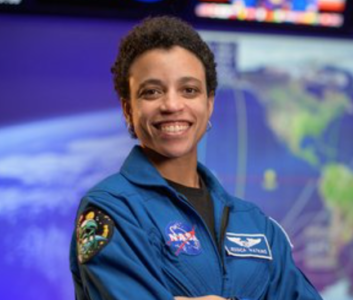 This year, members of the Caltech community received recognition for expanding the boundaries of scientific knowledge, but also for humanitarian endeavors and for blazing new educational and occupational paths for others to follow.
This year, members of the Caltech community received recognition for expanding the boundaries of scientific knowledge, but also for humanitarian endeavors and for blazing new educational and occupational paths for others to follow.
In March, Roman Korol, a Caltech graduate student, launched a project to collect and distribute humanitarian aid for families affected by the war in Ukraine.
In April, Jessica Watkins, who worked on the Mars Curiosity rover mission while a postdoc at Caltech, made history as the first Black woman on the International Space Station. From space, she hosted a live Q&A for Caltech students and faculty in Ramo Auditorium and reviewed a paper describing how geology on Mars works in dramatically different ways than on Earth.
In May, alumna Laurie Leshin (MS ’89, PhD ’95) assumed leadership of JPL, becoming its first female director.
In June, Carver Mead (BS ’56, MS ’57, PhD ’60), one of the fathers of modern computing, received the 2022 Kyoto Prize for leading contributions to the establishment of the guiding principles for very large-scale integration systems design, which enables the basis for integrated computer circuits.
In October, Caltech alumnus John Clauser (BS ’64) shared the 2022 Nobel Prize in Physics “for experiments with entangled photons, establishing the violation of Bell inequalities and pioneering quantum information science.” The same month, Edward Stone retired as the project scientist for NASA’s Voyager mission a half-century after taking on the role. Under his guidance, the Voyager probes explored the solar system’s four gas-giant planets and became the first human-made objects to reach interstellar space, the region between stars containing material generated by the death of nearby stars. Also, Tracy Dennison began her term as the new Ronald and Maxine Linde Leadership Chair of the Division of the Humanities and Social Sciences.
In November, 50 years after they entered Caltech as the Institute’s first Black female students, Karen Maples, MD (BS ’76); Deanna Hunt (BS ’76); and Lauretta Carroll (BS ’77) reflected on the challenges and successes they experienced then and in the years that followed.
Institute News
 Throughout the year, the Institute took steps to implement new programs and bolster existing ones that underscore Caltech’s guiding values, such as supporting students and postdoctoral scholars, creating a more inclusive environment, and celebrating and accounting for its history.
Throughout the year, the Institute took steps to implement new programs and bolster existing ones that underscore Caltech’s guiding values, such as supporting students and postdoctoral scholars, creating a more inclusive environment, and celebrating and accounting for its history.
To create more opportunities for students and increase interdisciplinary research, Caltech created a new graduate education track that combines medical engineering and electrical engineering. To further boost interdisciplinary research and expand Caltech’s prominence as a hub for mathematics, the Institute became the new home of the American Institute of Mathematics, an independent nonprofit organization funded in part by the National Science Foundation.
The Institute, which this year kicked off a partnership with the Carnegie Institution for Science, also became a charter member of SEA Change, an initiative of the American Association for the Advancement of Science that supports educational institutions as they systemically transform to improve diversity, equity, accessibility, and inclusion in science, technology, engineering, mathematics, and medicine.
The Institute expanded its Presidential Postdoctoral Fellowship, which supports efforts to diversify academia by recruiting and supporting promising postdoctoral scholars from underrepresented communities.
On campus, Caltech marked the dedication of the Grant D. Venerable House, honoring its namesake alumnus, who was the first Black undergraduate student to graduate from Caltech and an active student leader and athlete during his time on campus. It also celebrated the dedication of the Lee F. Browne Dining Hall, honoring the late Lee Franke Browne, a former Caltech employee and lecturer who dedicated his life and career to efforts that expanded students’ access to STEM and who advanced human rights.
In the Community
 With the return of in-person events, the Institute was able to reestablish and strengthen ties to the local community through educational programs for area students, and through cultural events and lectures whose online components often reached even broader audiences across the world.
With the return of in-person events, the Institute was able to reestablish and strengthen ties to the local community through educational programs for area students, and through cultural events and lectures whose online components often reached even broader audiences across the world.
This year, the Institute celebrated the centennial of the Caltech Seismological Laboratory, marking an unparalleled century at the forefront of earthquake science and geophysics.
Caltech also celebrated the 100th anniversary of the Watson Lectures, which launched in 1922 as a way to benefit the public through education and outreach. Continuing that tradition, Caltech partnered with local schools to bring high school students to campus to see the lectures and engaged young students through other educational outreach programs, including the new Caltech Earthquake Fellows program and the Caltech Planet Finder Academy, both of which launched this year. Other programs designed to bolster science education for young students included Summer Research Connection, a program that invites high school students and teachers from Pasadena Unified School District and other nearby schools into Caltech laboratories, and the National Science Olympiad Tournament, which Caltech hosted this year for the first time and whose students played the main role in conducting the event.
For the campus community, TechFest returned to campus for the first time since the start of the COVID-19 pandemic, welcoming students with an in-person block party on Beckman Mall complete with games and fireworks.
Caltech’s Public Programming was able to re-engage with the community through in-person events, including CaltechLive! events such as the performance of Nobuntu, a female a cappella quintet from Zimbabwe; and lectures from the Science Journeys, Movies that Matter and Behind the Book series that showcased such varied topics as a journey to the center of Jupiter, a discussion of the science of cooking, and how climate migration will reshape the world.




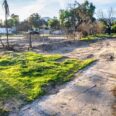







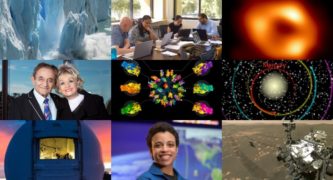

 18 comments
18 comments
